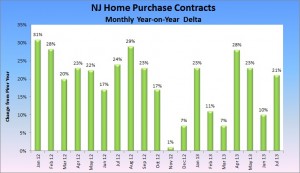From Inman News:
An innovative real estate business model, or threat to the MLS?
For technology companies, multiple listing services are the holy grail of the real estate listing information that underlies many of their products. MLSs are also gatekeepers, often deciding who gets access to which types of listing data.
But the reality is that the gate is full of holes, and industry experts do not agree on what that means for the future of the industry.
“There is a gap in policy and enforcement here that is permitting businesses to enter the IDX and the MLS world without really being in the real estate business, in the business of buying and selling homes,” said Brian Boero, partner and co-founder of real estate marketing, design and consulting firm 1000watt.
“The reaction to this — or the lack of reaction to this — is going to be worth watching because it kind of gets to this core question of ‘What is a real estate brokerage in two years, in five years?’ That’s really what is at the heart of this.”
In many markets, paper brokerages seem to be flying under the industry’s radar, an Inman News investigation has found. They do so with the help of licensed real estate brokers who, in some cases, serve as the broker of record for multiple companies.
Companies that have employed the paper brokerage model, or aspects of it — including RealEstate.com operator Market Leader, and Emeryville, Calif.-based ZipRealty Inc. — say they are driving innovation by finding new ways to deliver real estate information to consumers and connect them with agents.
But Inman News has learned that many MLSs are struggling to interpret whether their rules, which typically follow policies established by the National Association of Realtors, allow them to provide listings to websites operated by companies that aren’t actually representing buyers and sellers in their market.
At the crux of the issue is deciding who qualifies as an “MLS participant,” and how to treat those who don’t meet the definition.
A NAR policy stipulating that individual brokers and real estate firms must “offer or accept cooperation and compensation to and from other participants” to be considered MLS participants is aimed at excluding brokers who don’t list or sell properties from joining the MLS.

